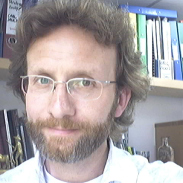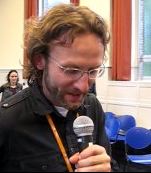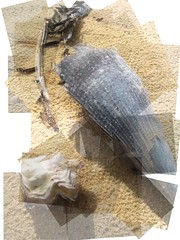It is hard to say “no” to friends. It is harder yet to predict what will happen when you say “yes.” When you will stumble upon a magic moment. Months ago I agreed to do an online session for one of my Australian pals, Frankie Forsythe, who I’ve known online for years since she took my (now dormant) online facilitation class.
The event was the Australian Flexible Learning Frameworks’ eRealities online conference. I was to kick of the second day.
Frankie and her colleagues asked me to do a session that wove together a ton of things and I was worried about a total fragmented mess. So after a few back and forths, we came to this description which you can see, could get one into trouble!
It’s a story with three hearts. It has a scaffold with three legs. It is a story told for the ears, the eyes and the heart. Join me as we explore how we got to this crazy time of “social media” and what it means for our learning with and from each other, how we can do it the best we are able to in a rapidly changing and often tension-filled context, and consider together what kind of future we want to build going forward.
At the end of the session participants were able to:
• understand how the intersection of technology and group forms impact our learning together online
• identify ways to work generatively with the tension of many opportunities and a scarcity of time (hey, what can we STOP doing?)
• identify steps to prepare to move forward positively in a time of rapid change
I had not overprepared for this session. I went in with 7 images and some thoughts, which is risky when you are in a “keynote” position. But my instinct was right. I was able to be really present. To listen. To follow and respond to/incorporate the chat stream into the conversation. We paused three times for full group input and people jumped in with head, heart and hand. You know those moments when you FEEL something. I was feeling it and I think at least some of the people in the online space were feeling it too.
So what was resonating? We were telling stories and using hand drawn images to reduce our electronic distance and barriers? We were talking about experiences that resonated for people in their work of teaching and learning online? I’m not sure. But it worked for me. I was grateful for the opportunity. When I was asked to send my invoice I said “contribute my honorarium to some local good cause. You gave me a gift.”
You can watch all the recorded sessions – you’ll have to register (free) but once you are in, you can find them all. Here is the information:
For those who couldn’t make it to the live conference, or didn’t get to attend all the sessions they were interested in, session recordings and resources are now available.
Just follow these steps:
- Log into the conference site – http://flexiblelearning.net.au/networksevents – if you have not previously registered you will need to do so to access the recordings
- Click on the Program tab
- Select the Title of the Session you would like to review
Click on the blue “Enter’ button to open the recording of the session.
Here are some of the event artifacts:

 should not be acting as chair of discussion– neither necessary or helpful. More about holding the space, backchannel matchmaking/connecting, draw out the quite – pastoral care behind the scenes. Then the energy the participants bring to the discussion doesn’t get blocked. I don’t think you can lead discussions online, you can only nudge them
should not be acting as chair of discussion– neither necessary or helpful. More about holding the space, backchannel matchmaking/connecting, draw out the quite – pastoral care behind the scenes. Then the energy the participants bring to the discussion doesn’t get blocked. I don’t think you can lead discussions online, you can only nudge them A tweet led me to a post today at
A tweet led me to a post today at